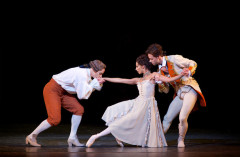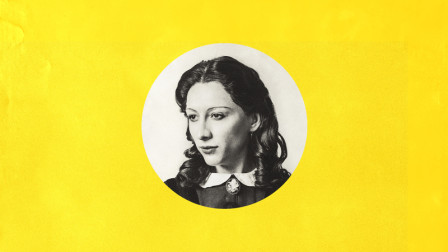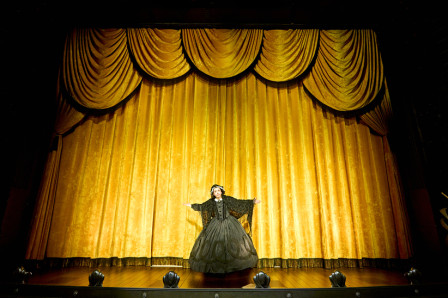Review: MANON at the Royal Opera House Covent Garden
 The story of Manon was banned after its publication in 1731 but due to the exploitative efforts of French charlatan entrepreneurs of the day, copies were made, prolonging the life of the text and eventually spawning two operas and this ballet version.
The story of Manon was banned after its publication in 1731 but due to the exploitative efforts of French charlatan entrepreneurs of the day, copies were made, prolonging the life of the text and eventually spawning two operas and this ballet version.
The enchanting Manon is all set to enter a convent, but due to her sylph-like beauty, men are captivated by her -- a fact not lost on her roguish brother Lescaut who decides to profit from it by entering into a financial arrangement with one of her wealthy admirers. During negotiations, Manon instead falls for a young student Des Grieux (whose financial prospects are considerably less advantageous) and they elope. An even wealthier patron known simply as Monsieur GM engages Lescaut to track down his sister and acquire her for him. On introduction, she is dazzled by his wealth and lured (with a succession of valuable trinkets) into accepting the role of his mistress.
A subsequent lover’s tryst, a fixed game of cards, a conviction for prostitution, transportation to the penal colony of Louisiana and an attempted escape from a lecherous gaoler through a swamp, all follow. It’s Forrest Gump meets Les Miserables without dialogue or singing, but with music cobbled together from various work by Jules Massenet (rather than his, or Puccini’s, opera versions) and despite all that, has become a mainstay of repertoire and is regularly performed during ballet seasons the world over.
With the addition of Kenneth MacMillan’s sexually provocative yet intensely romantic choreography, the entire story springs into life. A powdered-wig age, populated with harlots, beggars, aristos, innkeepers, skivvies and (of all things) actresses, gives ample opportunity for comedy, love, bawdy inappropriateness, unabashed misogyny, lust, cruelty, death, hunger and heartbreak.
This reviewer was accompanied to the performance by a lady who, (over ice cream during the second interval), railed against the heroine’s capriciousness and the heroes wimpy idiocy. She nailed it with that comment, identifying precisely why audiences become so impassioned by the story. MacMillan cannily ensured that key moments were told through pas de deux: Act I - they fall in love; Act II - bedroom shenanigans; Act III - the swamp stirs-up memories of how they reached their messy situation, whilst reaffirming their togetherness and status as lovers.
Melissa Hamilton shone in the title role, dancing throughout like a coquettish electric eel. Charged and mesmerising, she entranced audience members and the on-stage company alike, with her compelling interpretation and dazzling technical skill. American, Nehemiah Kish was rather less impressive as her lover Des Grieux, but the role can be something of a drippy support for all but the most masculine and assured of leading male dancers. By contrast, the Lescaut delivered by Valentino Zucchetti was deliciously Machiavellian and strong - particularly in the drunken scene where he was partnered with Meaghan Grace Hinkis who matched him technically, and was a perfect foil for the physical comedy elements.
The costumes and sets are a stunning spectrum of cloudy russets and ochres, deep oranges, puce and seasick grey-green. Each scene looks as though it has been painted by a follower of Rembrandt, is sumptuously evocative of the period and adds demonstrably to everyone’s visual enjoyment.
Latest News

 Review Round-Up: OH, MARY! at the Trafalgar Theatre
19 December 2025 at 15:53
Review Round-Up: OH, MARY! at the Trafalgar Theatre
19 December 2025 at 15:53

 The Jonathan Larson Project announces London premiere
19 December 2025 at 10:31
The Jonathan Larson Project announces London premiere
19 December 2025 at 10:31

 Oh, Mary at Trafalgar Theatre Review
19 December 2025 at 09:46
Oh, Mary at Trafalgar Theatre Review
19 December 2025 at 09:46

 Kerry Ellis completes cast for West End concert of Jo - The Little Women Musical
19 December 2025 at 09:35
Kerry Ellis completes cast for West End concert of Jo - The Little Women Musical
19 December 2025 at 09:35